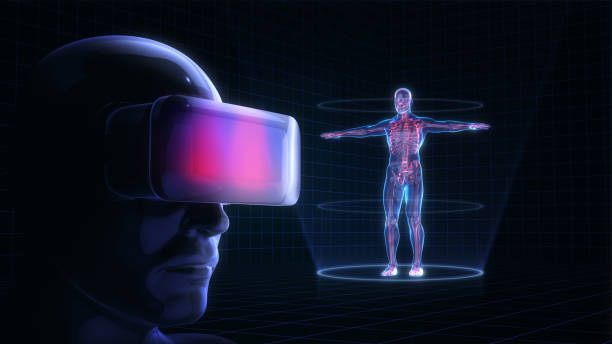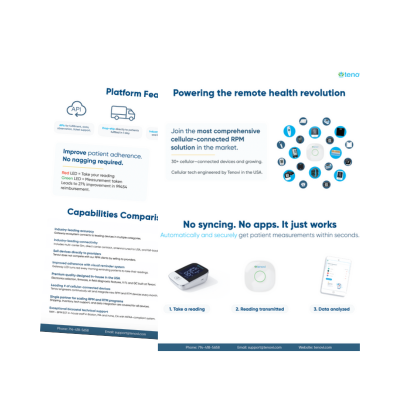Applying artificial intelligence (AI) in remote patient monitoring (RPM) can help streamline healthcare delivery for patients at home. FDA-cleared remote patient monitoring devices allow clinicians to monitor vital signs, including heart rate, heart rate variability, blood pressure, blood oxygen level, and more. With advancements in AI technology, monitoring and managing patients’ health conditions without geographical barriers provides precise, personalized care and early detection of complications.
This article explores the power of AI in remote patient monitoring and highlights real-life examples that showcase its advantages in healthcare.
AI in Remote Patient Monitoring & Personalized Care
A new era of personalized healthcare has ushered in with AI in remote patient monitoring. AI algorithms can create individualized patient care and treatment plans by analyzing vast patient data, including medical history, vital signs, and lifestyle choices. These care plans consider each patient’s unique characteristics. Thus enabling healthcare providers to deliver tailored treatments and interventions. The result is enhanced patient satisfaction and more effective chronic care management.
Real-life Example #1
A patient with diabetes may utilize an AI-powered remote patient monitoring system that tracks their blood glucose levels, physical activity, and dietary habits. Based on this data, the AI algorithm recommends personalized meal plans and exercise routines, leading to better glycemic control and reduced risk of complications.
Early Detection of Complications: AI in Remote Patient Monitoring
Thanks to AI in remote patient monitoring, primary care health issues are detected early, often before noticeable symptoms manifest. In remote patient monitoring, AI algorithms continuously analyze patient data to identify subtle changes in vital signs or symptoms that may indicate potential health risks. By alerting healthcare providers promptly, interventions can be implemented at the earliest stage. Ultimately, this leads to better treatment outcomes and reduced hospitalization rates.
Real-life Example #2
A patient with heart failure uses an AI-driven remote monitoring device that tracks their heart rate, blood pressure, and respiratory rate in real-time. The AI algorithm detects irregular patterns in the patient’s vital signs, signaling the possibility of an impending heart failure exacerbation. In this scenario, a qualified healthcare professional receives an alert. The clinician can then adjust the patient’s medication and prevent hospital admission promptly.
Empowering Patients in Self-Management: AI in Remote Patient Monitoring
Remote patient monitoring empowers chronic care, and elderly patients can proactively manage their health conditions. Patients can easily and actively track their health metrics, follow treatment plans, and make informed decisions with quick access to real-time data through RPM devices, wearables, and mobile apps. AI-powered virtual assistants and chatbots further assist patients by providing the following:
- personalized health education
- answering medical queries
- fostering better patient engagement
- encouraging adherence to treatment
Real-life Example #3
A patient diagnosed with hypertension may use an RPM blood pressure monitor and AI-driven mobile app. The devices work together to monitor the patient’s blood pressure and stress levels regularly. The blood pressure monitor provides a steady stream of daily measurements to the patient’s physician. At the same time, the app’s virtual assistant can educate the patient about the impact of lifestyle choices on blood pressure. Some apps offer personalized tips to reduce stress, enabling patients to manage their condition and improve overall well-being.
Enhanced Remote Diagnostics and Treatment: AI in Remote Patient Monitoring
AI has significantly improved the diagnostic capabilities of remote patient monitoring systems. These systems use machine learning algorithms to analyze medical images, such as X-rays and MRIs, with precision that rivals human experts. In rural communities, RPM expedites diagnosis, especially in resource-limited areas, and facilitates timely treatment planning.
Real-life Example #4
In a rural clinic with limited access to specialized radiologists, an AI-powered remote patient monitoring system analyzes chest X-rays to diagnose early-stage lung cancer. The AI algorithm identifies suspicious lesions, prompting the healthcare provider to arrange further diagnostic tests and initiate early treatment.
Predictive Analytics for Disease Progression
Vital signs such as temperature, pulse, respiratory rate, and mean arterial pressure are continuous predictors of emergency department visits. AI-powered predictive analytics are crucial in remote patient monitoring by forecasting disease progression and potential complications. These algorithms analyze historical patient data, current health metrics, and other relevant factors to predict the likelihood of certain health events occurring in the future.
This enables healthcare providers to intervene and modify treatment plans proactively, reducing the risk of adverse outcomes. One case series study showed that wireless remote vital signs monitoring systems on surgical wards could reduce the time to detect deteriorating patients.
Real-life Example #5
A patient with chronic obstructive pulmonary disease (COPD) uses an AI-enabled remote pulse oximeter device. The RPM device tracks lung function, oxygen levels, and respiratory symptoms. The AI algorithm analyzes the collected data and identifies patterns indicating a higher exacerbation risk.
The patient’s healthcare team receives an alert, allowing them to adjust medication and provide timely interventions, thereby preventing severe respiratory episodes and hospitalizations. This illustrates AI’s predictive capabilities in enhancing RPM by identifying potential complications before they escalate. Predictive measures lead to improved patient outcomes and a higher quality of life for individuals managing chronic conditions.
Understanding AI in Remote Patient Monitoring
AI-driven solutions offer personalized care plans and early detection of complications, empower patients to self-manage, and enhance diagnostics. Real-life examples underscore the substantial impact of AI technology in improving patient outcomes and elevating the standard of healthcare worldwide.
As AI continues to evolve, its potential to revolutionize remote patient monitoring will undoubtedly reshape the future of healthcare, transcending barriers and ensuring accessible, efficient, and patient-centered medical care for all.
If you want to learn more about how Tenovi delivers better care with remote patient monitoring, please schedule a free demo and consultation today.


